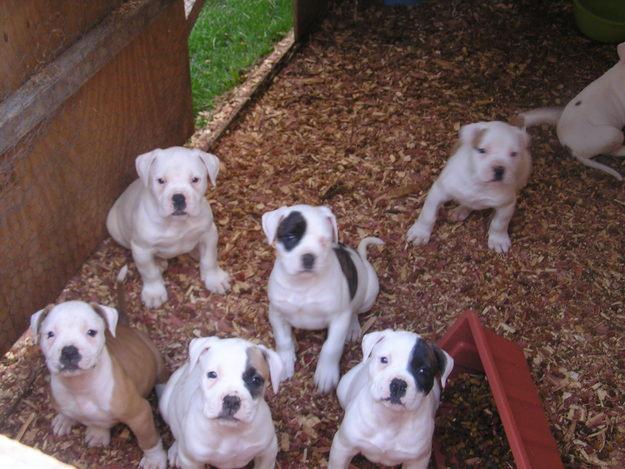15 Tips To Manage Dog Fights Without Getting Hurt

Dog fights can escalate in seconds, putting both pets and people at risk. Unlike playful roughhousing, real fights involve aggression and danger. Knowing how to stop one fast can prevent serious injuries. This article covers 15 emergency tactics to break up a dog fight safely and effectively before it worsens.
Stay Calm And Assess The Fight

Panic makes everything worse. If you rush in screaming, you’ll add chaos to an already dangerous situation. Instead, assess the intensity. Some scuffles resolve on their own, but others might require intervention. A level-headed approach helps you act decisively and keep both dogs and yourself safe.
Clap Loudly Or Shout To Startle

Noise can be your best friend in an emergency. A sharp, unexpected sound like a loud clap or a firm shout can distract the dogs long enough to break their focus. Just be careful not to yell aggressively, as that can add fuel to their fight instead of stopping it.
Use A Hose Or Water Bottle

Dogs don’t love surprises, especially when they’re wet. A quick spray of water to the face can break their concentration and force them apart. If you don’t have a hose nearby, even a water bottle can do the trick. Just be sure to aim for their faces, not their bodies.
Throw A Blanket Over The Dogs

Sight is a powerful trigger in a dogfight. Throwing a blanket over the combatants can confuse them and force a pause. Suddenly blinded, they may disengage long enough for you to separate them safely. This trick is especially useful if you’re alone and need a quick solution.
Try The Wheelbarrow Technique

This method is simple but effective. Grab one dog by the hind legs and lift them like a wheelbarrow, pulling backward. This forces them off balance and often makes them release their bite. If another person is available, they should do the same for the other dog to avoid further conflict.
Blow An Air Horn Or Whistle

An air horn can be a lifesaver in a dog fight. The sudden, piercing sound can shock the dogs into letting go. If you don’t have one, a loud whistle might work. Keep one handy if you frequent dog parks or multi-dog households.
Use A Leash To Pull Back

If grabbing the dog isn’t an option, a leash can help. Looping a leash around their waist or back legs and pulling gently can separate them without direct hand contact. This reduces the chance of bites and allows for a controlled retreat to safety.
Twist The Collar For Quick Release

A locked jaw is terrifying. When a dog refuses to let go, twisting their collar can restrict airflow just enough to make them release their grip. This should be done carefully and only if absolutely necessary. Always follow up by checking both dogs for injuries after separation.
A Break Stick For Jaw Locks Also Works

Some breeds have powerful grips and won’t let go easily. A break stick is a sturdy tool designed to pry open a dog’s jaws. Insert it carefully at the back of the mouth and twist gently. This method requires caution but is one of the only ways to release a stubborn bite.
Create A Barrier With An Object

If a dog fight breaks out near furniture or objects, use them to your advantage. A trash can lid, a folded umbrella, or even a backpack can be placed between the dogs to separate them. The goal is to create space without using your body as a shield.
Use Citronella Spray As A Deterrent

Citronella spray is like pepper spray for dogs but without harmful effects. Many dogs dislike the scent, and a quick spritz can break their concentration. Citronella leaves a lingering deterrent, which discourages further aggression. Keep a can handy if your dog has a history of unfriendly encounters.
Other Scents That Work As A Distraction

We know that dogs rely heavily on their sense of smell, so an unexpected strong scent can disrupt their focus. Spraying vinegar, rubbing alcohol, or even opening a jar of strong-smelling ointment (like menthol or Vicks) near the dogs’ noses may startle them enough to disengage. Use this as a last resort if other methods fail.
Separate Dogs And Secure Them

Stopping the fight is only half the battle. Once separated, make sure the dogs can’t see or reach each other. Go to separate rooms to keep them apart until they calm down. Reintroducing them too soon can restart the fight.
Check Both Dogs For Injuries

Adrenaline masks pain. Even if the fight looks minor, both dogs should be checked for wounds. Look for punctures, limping, or signs of shock. If there’s any doubt, a vet visit is the safest choice. Quick treatment prevents infections and ensures your dog recovers without complications.
Seek Professional Help If Needed

Some dogs even hold grudges. If your dog has been in multiple fights or seems overly aggressive, consulting a professional trainer or behaviorist is wise. Proper training can prevent future incidents, ensuring a safer environment for both pets and owners. Prevention is always better than intervention.






